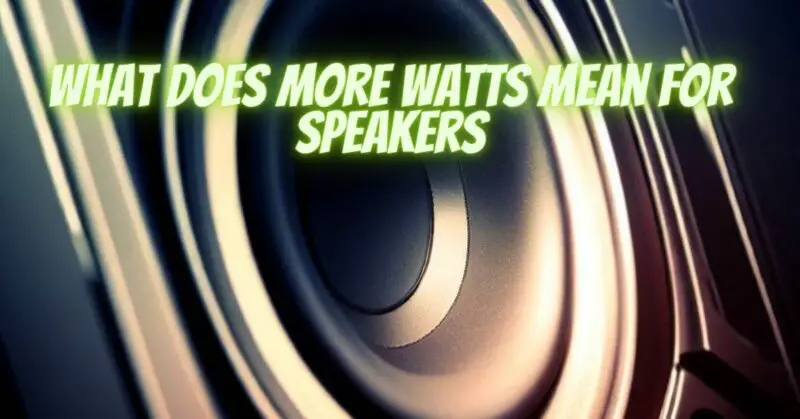When it comes to buying speakers, one of the specifications that often catches attention is wattage. More watts are often associated with more power and, therefore, the assumption of louder and better sound. However, the relationship between wattage and speaker performance is more nuanced than that. In this article, we will delve into what more watts mean for speakers and how it can impact their performance and overall audio experience.
Wattage and Power Handling
Wattage, in the context of speakers, refers to the power handling capability of a speaker – the maximum amount of power it can handle without experiencing damage or distortion. It is usually represented as “W” or “Watts” in speaker specifications. Two essential wattage ratings you’ll encounter are “RMS” (Root Mean Square) and “Peak” power.
- RMS Power: RMS power represents the continuous power that a speaker can handle on a long-term basis without overheating or causing damage. It indicates the average power output that a speaker can handle during normal usage.
- Peak Power: Peak power represents the maximum power level that a speaker can handle in short bursts or peak moments. It is usually higher than the RMS power and is related to handling sudden spikes in sound, such as in action movie scenes or musical crescendos.
The Impact of More Watts on Speaker Performance
- Volume and Loudness: One of the primary impacts of more watts is the potential for higher volume and increased loudness. With higher power handling capability, speakers can handle more power from the amplifier, leading to greater sound output. This can be advantageous in larger rooms or when you need to fill a space with sound.
- Headroom and Clarity: More watts also provide speakers with more headroom. Headroom is the amount of power above the average listening level that a speaker can handle without distortion. Higher headroom allows the speaker to handle dynamic peaks in music or movie soundtracks with clarity and without compression.
- Sound Quality: While more watts can lead to higher volume levels and greater headroom, it doesn’t necessarily guarantee better sound quality on its own. The overall sound quality of a speaker is influenced by various factors, including speaker design, driver materials, enclosure construction, and crossover networks.
- Amplifier Compatibility: It’s essential to ensure that the wattage rating of your amplifier matches or is higher than the wattage rating of your speakers. If the amplifier’s power output exceeds the speaker’s power handling capacity, it can cause damage to the speakers. Conversely, an underpowered amplifier may not fully utilize the speaker’s potential.
More watts can provide certain advantages to speakers, including higher volume, increased headroom, and potential improvements in loudness. However, the wattage rating is just one of several factors that influence a speaker’s performance and sound quality.
The overall sound experience is a combination of wattage, speaker sensitivity, amplifier compatibility, speaker design, and the listening environment. Finding the right balance between these factors is crucial to achieving the best results for your audio setup.
When choosing speakers, it’s essential to consider your specific needs, room size, listening preferences, and the types of content you’ll be enjoying. While more watts can be beneficial in certain situations, it’s equally important to focus on the overall design, engineering, and sound signature of the speakers to ensure they deliver a satisfying and enjoyable listening experience for you.


